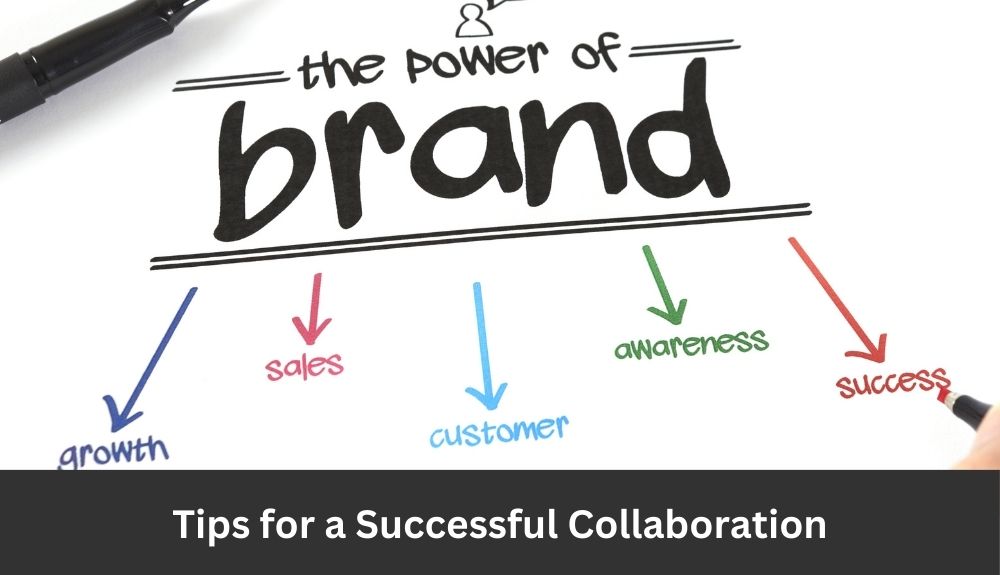Brand Collaboration in the Fashion Industry: Leveraging Partnerships for Growth and Exposure
Welcome to the glamorous world of fashion, where style meets innovation and creativity knows no bounds. In this fast-paced industry, staying ahead of the curve is not just a choice, but a necessity for brands looking to make their mark. And one powerful way to achieve that is through brand collaboration.
In today’s blog post, we’ll delve into the exciting realm of brand collaboration in the fashion industry. We’ll explore how partnering with other like-minded brands can bring immense benefits such as growth and exposure. From identifying the right partner to navigating potential challenges, we’ll provide you with valuable insights and tips on making your collaborations successful.
So buckle up and get ready to discover how strategic partnerships are transforming the landscape of fashion! Whether you’re an established label or an emerging designer seeking new avenues for expansion, this article is brimming with knowledge that will help propel your brand towards even greater success. Let’s dive in!
The Benefits of Collaborating with Other Brands
Collaborating with other brands in the fashion industry can bring a plethora of benefits to your business. It allows you to tap into an entirely new audience base. By partnering with a brand that has a similar target market but different customer demographics, you can expand your reach and gain exposure to potential customers who may not have been familiar with your brand before.
Additionally, collaborating with other brands provides an opportunity for creative synergy. Two heads are often better than one when it comes to brainstorming innovative ideas and designs. By combining the unique strengths and expertise of each brand, you can create something truly extraordinary that neither brand could have achieved on their own.
Brand collaborations also offer the chance to leverage shared resources and reduce costs. Through joint marketing efforts or co-branded events, both brands can pool their resources together for maximum impact while sharing expenses.
Moreover, collaborating with other brands helps build credibility and trust among consumers. When two reputable brands come together, it signals quality assurance and enhances the perceived value of their products or services in the eyes of consumers.
Brand collaborations open doors for cross-promotion opportunities across various platforms such as social media channels or physical retail spaces. This kind of exposure not only increases visibility but also drives traffic to both parties involved.
Collaboration is key in today’s highly competitive fashion industry. It offers numerous benefits including expanded audience reach, enhanced creativity, cost savings through shared resources, increased credibility among consumers, and cross-promotion opportunities for higher visibility. Embracing strategic partnerships can propel your brand forward amidst an ever-evolving landscape!
How to Identify the Right Partner for Your Brand
Identifying the right partner for your brand is crucial in ensuring a successful collaboration in the fashion industry. But with so many potential options out there, how do you go about finding the perfect fit? Here are some tips to help you navigate this process.
It’s important to have a clear understanding of your brand values and objectives. What is your brand’s mission? Who is your target audience? By knowing these key elements, you can search for partners who align with your vision and share similar values.
Next, consider the complementary nature of the partnership. Look for brands that offer products or services that complement yours without direct competition. For example, if you’re a clothing brand focusing on sustainable fashion, partnering with an eco-friendly accessories brand could be a great match.
Researching potential partners is essential. Take time to evaluate their reputation and track record within the industry. Look at their previous collaborations and assess whether they were successful and well-received by customers.
Establishing open lines of communication is vital when identifying a partner. Ensure that both parties have shared goals and expectations from the collaboration. This will help avoid any misunderstandings or conflicts down the line.
Trust your instincts! If something feels off during discussions or negotiations with a potential partner, it may be best to explore other options. Remember that choosing the right partner should feel like a natural fit that enhances both brands’ image and value proposition.
Finding the right partner for your fashion brand requires careful consideration of alignment in values, complimentary offerings, research into reputation track records as well as establishing effective communication channels between both parties involved
Tips for a Successful Collaboration

1. Clearly Define Goals and Expectations: Before entering into a brand collaboration, it’s crucial to establish clear goals and expectations for both parties involved. This ensures that everyone is on the same page and working towards a common objective.
2. Choose Complementary Brands: Look for brands that have a similar target audience or share similar values to yours. Collaborating with complementary brands can help you reach new customers and enhance your brand image.
3. Communication is Key: Effective communication is vital throughout the entire collaboration process. Regularly communicate with your partner to stay updated on progress, address any concerns or issues, and ensure smooth coordination between teams.
4. Delegate Responsibilities Fairly: Divide tasks and responsibilities fairly between both brands to ensure an equal contribution from each party involved in the collaboration. This helps create a sense of ownership and commitment from all stakeholders.
5. Be Flexible and Open-Minded: Collaboration often requires compromise, so be open-minded when considering ideas or suggestions from your partner brand. Flexibility allows for creative solutions that can benefit both brands involved.
6. Promote Each Other Authentically: When promoting the collaborative project, make sure to showcase each other’s strengths authentically rather than focusing solely on self-promotion. This approach creates mutual respect among audiences while expanding reach.
7. Don’t Forget About Deadlines: To maintain momentum in your collaboration, adhere closely to agreed-upon deadlines for deliverables and milestones.
Make sure you keep track of important dates associated with the partnership.
8. Celebrate Success Together: When the collaboration yields positive results, celebrate them together! Recognize each other’s efforts publicly through social media shoutouts or joint events.
Challenges and Risks of Brand Collaboration
While brand collaboration can bring numerous benefits, it’s important to be aware of the potential challenges and risks that may arise along the way. One major challenge is finding a partner whose values and aesthetic align with your own. It’s crucial to ensure that both brands have a shared vision in order to create a cohesive and successful collaboration.
Another challenge is managing expectations. Each brand brings its own unique strengths and weaknesses to the table, so it’s important to set realistic goals from the start. Misaligned expectations can lead to disappointment or even strain on the partnership.
Additionally, there may be logistical challenges such as coordinating timelines, production schedules, or distribution methods. Communication is key in overcoming these obstacles and maintaining a smooth collaboration process.
Risk assessment is also essential when entering into a brand collaboration. It’s important to assess factors such as reputation risk (will partnering with this brand positively impact my own image?), financial risk (what are the costs involved?), and legal risk (are there any potential conflicts over intellectual property?).
One must consider post-collaboration fallout. There is always a possibility that consumers may not respond favorably to the collaboration or that it could dilute one or both brands’ identities if not executed properly.
Navigating these challenges requires careful planning, open communication, and flexibility from both parties involved in order to achieve successful outcomes.
How to Measure the Success of a Brand Collaboration

Measuring the success of a brand collaboration is crucial to understanding its impact and determining if it achieved its objectives. While there is no one-size-fits-all approach, there are several key metrics that can help evaluate the effectiveness of your collaboration.
You should assess the increase in brand exposure and audience reach resulting from the partnership. This can be measured by tracking website traffic, social media engagement, and follower growth during and after the collaboration. Look for spikes in these metrics compared to your baseline performance.
Consider how the collaboration has affected sales and revenue. Analyze any changes in sales volume or revenue generated during the partnership period. You can also survey customers to gauge their perception of your brand and whether they were influenced by the collaborative efforts.
Additionally, monitor customer feedback and sentiment following the collaboration. Are people talking positively about your brand? Has there been an increase in mentions or user-generated content related to the partnership? Assessing sentiment will provide insights into how well received your collaborative campaign was among consumers.
Furthermore, track any press coverage or media mentions garnered through this partnership. Evaluate both quality (such as features on prominent publications) and quantity (the number of articles or mentions obtained). Media attention acts as valuable third-party validation for your collaboration’s success.
Don’t forget to reflect on internal factors such as team morale and learning opportunities gained from working with another brand. Assess whether employees felt motivated by this initiative or if they acquired new skills that could benefit future collaborations.
Measuring success goes beyond just analyzing numbers; it involves gathering qualitative data as well. By considering these various aspects when evaluating a brand collaboration’s impact, you’ll gain valuable insights into its overall effectiveness and make informed decisions for future partnerships.
Conclusion: The Importance of Strategic Partnerships in the Ever-Evolving Fashion Industry
In today’s fast-paced and competitive fashion industry, brands are constantly seeking innovative ways to stand out from the crowd. One effective strategy that has gained significant traction is brand collaboration. By partnering with like-minded brands, fashion companies can tap into new markets, increase their exposure, and ultimately drive growth.
The benefits of collaborating with other brands are numerous. It allows for the pooling of resources and expertise, enabling both parties to create something truly unique and memorable. Additionally, by joining forces with complementary brands, each partner can leverage their existing customer base and reach a wider audience.
Identifying the right partner for your brand is crucial to a successful collaboration. It’s important to consider factors such as shared values, target audience alignment, and brand reputation. By selecting a partner that aligns with your brand identity and goals, you can ensure that the collaboration resonates with both sets of customers.
To ensure a successful partnership, communication and clear objectives are key. Establishing open lines of communication from the outset will help facilitate seamless coordination throughout the collaboration process. Setting specific goals and expectations will also provide clarity on what success looks like for both partners.
While brand collaborations offer great opportunities for growth and exposure in the fashion industry, they do come with challenges and risks. Maintaining consistent messaging across multiple brands can be complex, requiring careful planning and execution to avoid diluting each partner’s individual identity. Additionally, there may be logistical issues or differences in creative direction that need to be addressed upfront.
Measuring the success of a brand collaboration involves tracking various metrics such as increased sales or website traffic generated during the partnership period. Monitoring social media engagement or conducting customer surveys can also provide valuable insights into consumer perception of the joint venture.











